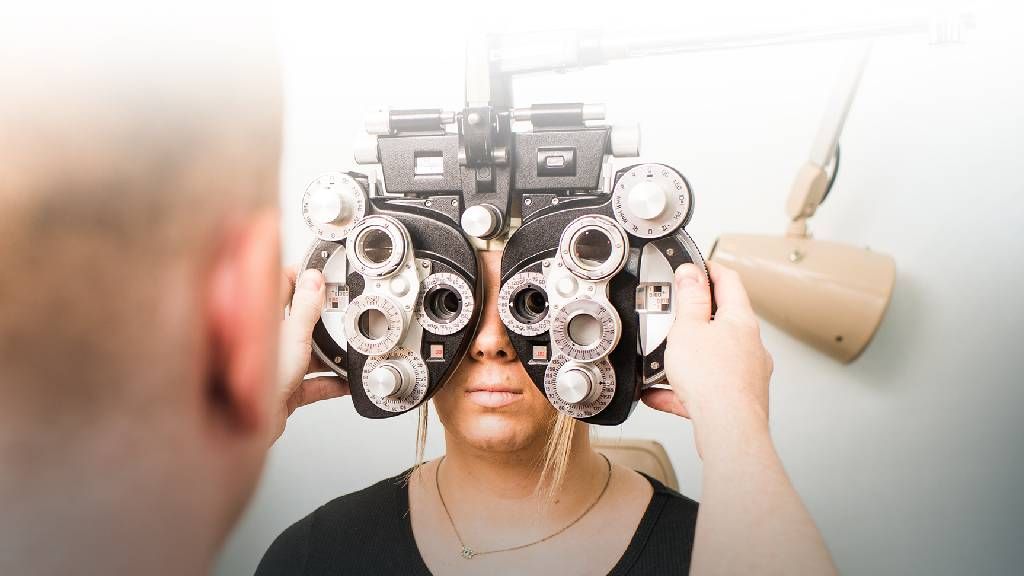Comprehensive Eye Center Andalusia: Top Quality Eye Care Providers
Comprehensive Eye Center Andalusia: Top Quality Eye Care Providers
Blog Article
Comprehending the Different Vision Correction Procedures Available for Clearer View
In the world of vision adjustment treatments, a wide variety of choices exist to address refractive mistakes and offer people with clearer sight. From the widely identified LASIK surgical treatment to much less invasive procedures like PRK and implantable lenses, the area of ophthalmology provides an array of techniques customized to suit various demands and preferences. Each treatment includes its very own set of considerations, advantages, and potential threats. Comprehending the nuances of these vision correction techniques is essential for making educated decisions regarding one's aesthetic health and wellness. Allow's explore the ins and outs of these procedures and clarified the course to accomplishing improved vision clearness.
LASIK Surgical Treatment
LASIK surgical procedure is a typical refractive procedure utilized to remedy vision problems such as astigmatism, nearsightedness, and farsightedness. This medical strategy, which stands for Laser-Assisted in Situ Keratomileusis, aims to reshape the cornea to enhance exactly how light is concentrated on the retina, inevitably boosting vision clarity. During the procedure, a thin flap is created on the cornea, and a laser is used to get rid of precise amounts of tissue to reshape it appropriately. This reshaping allows for light to be precisely focused onto the retina, fixing refractive errors.
Among the main benefits of LASIK surgical treatment is the fast enhancement in vision experienced by clients. Many people observe a considerable enhancement in their eyesight instantly after the treatment. Furthermore, many people report very little pain and discomfort during the surgical procedure and healing period. The recuperation time for LASIK is fairly quick, with several individuals going back to their everyday tasks within a day or 2 post-operation. In general, LASIK surgical procedure is a prominent option for people seeking a long-term option for their vision problems.
PRK Treatment

PRK is a suitable choice for people with slim corneas or those at a greater danger of eye injuries, as it does not include developing a corneal flap. The recovery process for PRK is somewhat longer contrasted to LASIK, as the epithelium requires time to regrow. People might experience discomfort and blurry vision for a few days following the procedure.
Despite the longer healing time, PRK can produce superb outcomes in vision renovation, making it a beneficial choice for those that may not be suitable candidates for LASIK surgery. - Neurologist Andalusia
Implantable Lenses
In comparison to PRK where the cornea is improved straight, implantable lenses use one more technique for fixing vision by inserting artificial lenses inside the eye. This treatment is specifically valuable for people with high degrees of farsightedness, astigmatism, or nearsightedness who might not be appropriate candidates for laser surgeries like LASIK or PRK.
Implantable lenses, additionally referred to as phakic intraocular lenses, work by supplementing the eye's natural lens with an artificial one. These lenses can be positioned in front of the natural lens (former chamber) or behind the iris and in front of the all-natural lens (posterior chamber) By readjusting the power and positioning of these lenses, ophthalmologists can effectively deal with refractive mistakes and enhance aesthetic acuity.
One benefit of implantable lenses is that they are exchangeable and removable, giving versatility for future adjustments. As with any medical procedure, there are threats involved, such as infection or cataract development. Patients taking into consideration implantable lenses must seek advice from an eye treatment professional to figure out one of the most appropriate option based upon their individual click here for more demands and eye health.
Corneal Rings

The treatment for placing corneal rings is minimally intrusive and relatively quick, typically done as an outpatient treatment. During the surgical treatment, the eye doctor makes a tiny laceration in the cornea and inserts the rings at a details deepness. As soon as in position, the rings aid to improve the cornea, supplying a smoother surface area for light to go into the eye, which can lead to clearer vision.
Corneal rings are thought about a reversible procedure, as they can be removed or changed if essential. While they might not totally get rid of the need for glasses or contact lenses, corneal rings can considerably improve vision top quality and total aesthetic comfort for individuals with keratoconus or other corneal abnormalities.
Refractive Lens Exchange
Complying with the modification of corneal irregularities with treatments like corneal rings, an additional vision modification method that can deal with refractive mistakes is Refractive Lens Exchange (RLE) RLE is a medical procedure that entails changing the eye's natural lens with an artificial intraocular lens (IOL) to deal with refractive mistakes such as nearsightedness, presbyopia, and farsightedness. This treatment is especially useful for individuals that may not be ideal candidates for treatments like LASIK or PRK because of aspects such as slim corneas or high refractive errors.
Recuperation time for RLE is fairly fast, and patients can anticipate better vision quickly after the procedure. As with any kind of surgical treatment, potential dangers and difficulties exist, so a thorough assessment with an eye treatment professional is important to identify if RLE is the ideal vision improvement option.
Final Thought

In the world of vision modification procedures, a wide variety of choices exist to address refractive mistakes and offer people with clearer view.LASIK surgery is an usual refractive treatment used to deal with vision issues such as farsightedness, astigmatism, and nearsightedness.While also a common refractive treatment, the PRK (Photorefractive Keratectomy) technique varies from LASIK surgery in its technique to correcting vision issues.Adhering to the improvement of corneal irregularities with treatments like corneal rings, another vision adjustment strategy that can address refractive errors is Refractive Lens Exchange view it (RLE) LASIK surgery, PRK treatment, implantable lenses, corneal rings, and refractive lens exchange are all alternatives that can Clicking Here address different vision concerns.
Report this page